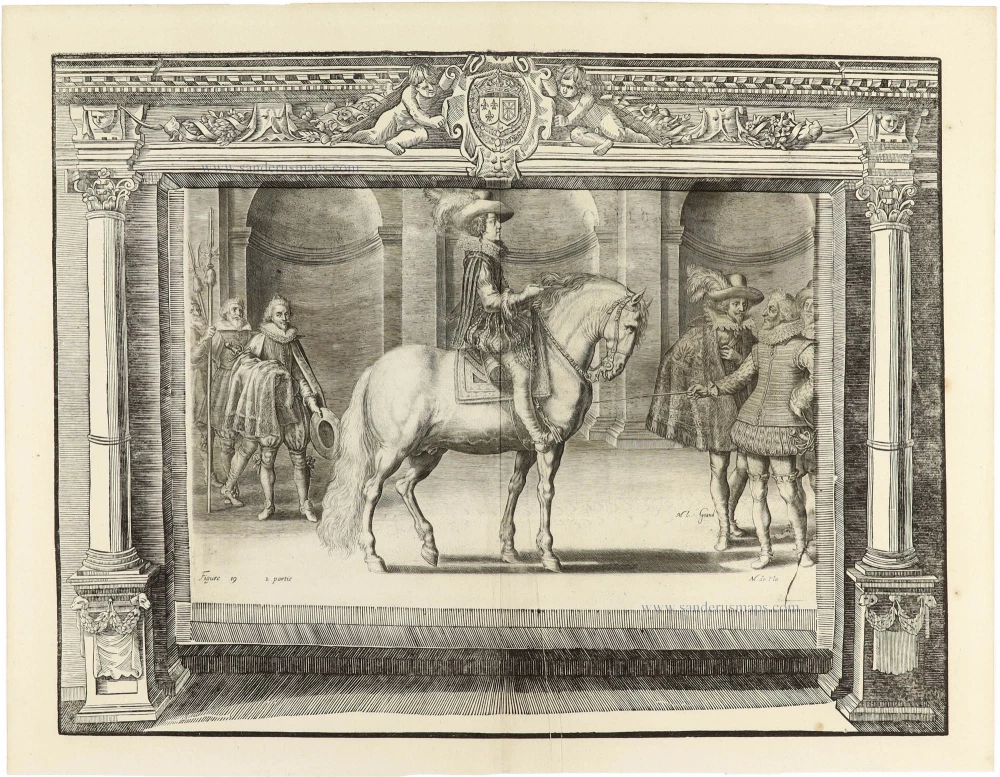Equestrian Art - Pluvinel, 1666
Antoine de Pluvinel (1555-1620) was one of the most famous stable masters in France and was regarded as the finest riding master of his day. He opened his riding academy in the Faubourg Saint-Honoré under King Henri IV. Later, King Louis XIII covered him with honours, appointing him the Principal Squire of the King. For him, Plunivel composed the Manège Royal, published in 1623. A new edition, consistent with Plunivel's Manuscript, appeared in 1625 under the titel L'instruction au Roy sur l'exercice de monter à cheval. The engravings represent Plunivel teaching equestrian art to Louis XIII and the great men of the court, whose names are always cited. The background of the engravings sometimes reveals certain Parisian buildings at the time.
Figure 19
Item Number: 16233 Authenticity Guarantee
Category: Prints > Pluvinel - Equestrian Art
Equestrian Art - Pluvinel.
Title: Figure 19
Engraver: Crispijn de Passe (1594/95-1670).
Date: 1666.
Copper engraving, printed on paper.
Image size: 320 x 415mm (12.6 x 16.34 inches).
Sheet size: 360 x 460mm (14.17 x 18.11 inches).
Verso: Blank.
Condition: Excellent.
Condition Rating: A+.
From: Pluvinel, Antoine De. L'instruction du Roy en l'exercise de monter à cheval, Amsterdam, Schipper, J., 1666.
Antoine de Pluvinel (1555-1620) was one of the most famous stable masters in France and was regarded as the finest riding master of his day. He opened his riding academy in the Faubourg Saint-Honoré under King Henri IV. Later, King Louis XIII covered him with honours, appointing him the Principal Squire of the King. For him, Plunivel composed the Manège Royal, published in 1623. A new edition, consistent with Plunivel's Manuscript, appeared in 1625 under the titel L'instruction au Roy sur l'exercice de monter à cheval. The engravings represent Plunivel teaching equestrian art to Louis XIII and the great men of the court, whose names are always cited. The background of the engravings sometimes reveals certain Parisian buildings at the time.

